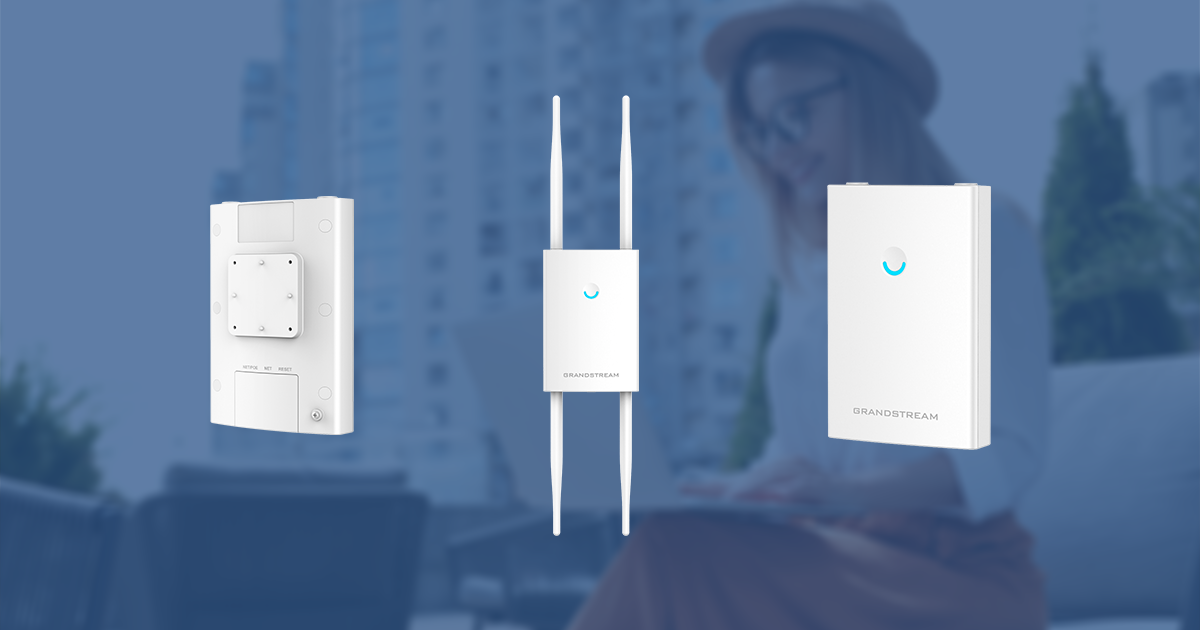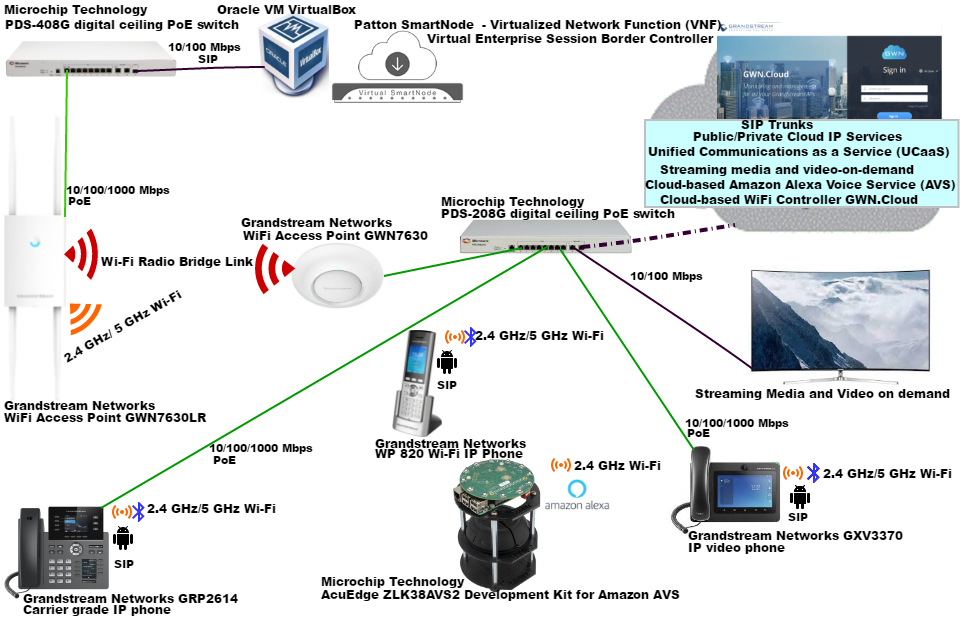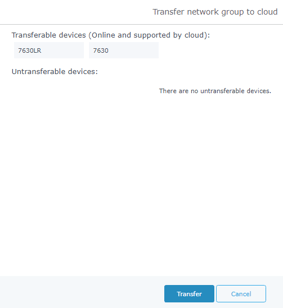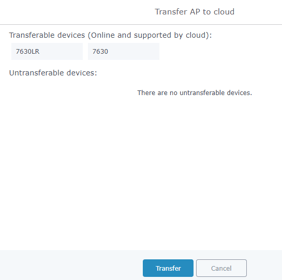Outdoor Long-range Wi-Fi Access Points Enable Connectivity in Key Locations

Note: This review was originally published on TMCNet's UC Network Management website, which can be found here.
As an end user in a mobile society, for high bandwidth applications and high-client density scenarios indoors or outdoors we are ever more reliant on good Wi-Fi connectivity. We now have outdoor long-range 802.11ac Wave-2 Wi-Fi access points (APs) that are equipped with an embedded controller and that also supports centralized, scalable management system choices such as cloud hosted /cloud Software-as-a-Service (SaaS) or a premise based Virtual WLAN (vWLAN) controller. These APs are also equipped with features, networking standards and protocols such as: Multi-User Multiple Input Multiple Output (MU-MIMO) technology, band steering, multiple service set identifiers (SSIDs), dual-2.4GHz/5GHz radio bands, mesh networking, gigabit ethernet ports with PoE/PoE+,802.11ac, 802.11ac Wave 2, 802.11k, 802.11r and 802.11v, air time fairness, captive portal for custom branding experiences, client bridge function, client steering, multicast stream to unicast stream conversion, beamforming, Wi-Fi and system security features such as- digitally signed firmware for anti-hacking secure boot, randomly generated default password, unique security certificate, WEP, WPA/WPA2-PSK and WPA/WPA2 enterprise, ports to connect external antennas, master controller failover function for redundancy and backup etc.
Let us examine how the above access point can prove beneficial to an end user’s overall wireless experience. Embedded controller functionality on the AP permits centralized management/monitoring and set-up of other APs and clients, on the wireless network without any additional cost and infrastructure for Wi-Fi controllers. Mesh networking feature provides redundancy and creates wireless radio connections between APs. With the beamforming feature, access points detect the location of clients and direct the antenna beam towards them. Client bridge feature allows the AP to bridge wired clients. Band steering enables the AP to select the least used radio band. MU-MIMO using multiple antennas, enables transmission and reception of multiple data streams concurrently…. multiple spatial streams …for improving network throughput. Converting multicast to unicast streams over the wireless link helps conserve bandwidth for other wireless clients and improves the quality and reliability of video and audio streams. Multiple SSIDs permit multiple wireless segments. Client steering within the same network, helps Wi-Fi clients to roam to other APs. A custom splash page or captive page, a web page that is displayed to newly connected Wi-Fi users prompting them for authentication etc. aids in a custom branding experience. Last but not the least, a centralized cloud Wi-Fi management platform enables management and control for unlimited APs across geographic locations using a browser and mobile apps, sans a Wi-Fi controller on premises.
The ensuing discussion will focus our attention on the Grandstream Networks’ offering, namely the GWN7630LR outdoor long-range 802.11ac Wave-2 4×4:4 Wi-Fi access point (Refer to Fig. A above) and the cloud controller GWN.cloud for Wi-Fi management and monitoring.
The GWN7630LR outdoor long-range 802.11ac Wave-2 4×4:4 Wi-Fi access point offers:
Network Speeds/interfaces, SSID support: up to 2.33 Gbps wireless throughput, 2X1Gbps Ethernet ports and 16 SSIDs per AP.
Range & Client access: up to 300m range and 200+ concurrent clients.
Antennas, MIMO support, Maximum Tx power: 4 detachable/changeable dual-band omnidirectional antennas -2.4 GHz-3.5dBi gain/5 GHz-3.5dBi gain, 4X4:4 2.4G (MIMO), 4X4:4 5G (MU-MIMO). 2.4G: 27 dBm 5G: 25 dBm
Environmental/Mounting: Operation: -30°C to 60°C. Waterproof casing and heat resistant technology and when installed vertically it offers IP66-level weatherproof capability. Wall mount or pole mount.
LED: 1 tri-color LED for device tracking/status indication.
Power over Ethernet (PoE) support: 802.3af/802.3at. PoE 802.3af/ 802.3at; Max Consumption: 16.5W
Controller-less management: The embedded controller can auto-discover/auto-provision/manage 50 local GWN APs without a separate controller. Optionally the GWN.cloud, a free cloud management platform for unlimited GWN APs can be used or the soon to be offered premise-based software controller GWN.Manager can be used for up to 3,000 GWN APs.
System and Wi-Fi security: Digital signatures for anti-hacking secure boot and critical data/control lockdown, unique security certificate and random default password per device, WEP, WPA/WPA2-PSK, WPA/WPA2 enterprise, etc.
Wi-Fi data rates and channel bandwidth offered: IEEE 802.11ac: 6.5 Mbps to 1733Mbps, IEEE 802.11a: 6, 9, 12, 18, 24, 36, 48, 54 Mbps, IEEE 802.11n: 6.5Mbps to 600Mbps, IEEE 802.11b: 1, 2, 5.5, 11 Mbps, IEEE 802.11g: 6, 9, 12, 18, 24, 36, 48, 54 Mbps, 2.4Ghz: 20 and 40 MHz, 5Ghz: 20,40 and 80 MHz
Advanced QoS features for real time, low latency applications: 802.11e/WMM, VLAN, TOS.
A cloud Wi-Fi controller, Grandstream Networks GWN.cloud, provides Wi-Fi management and monitoring capability:
Hosted on Amazon web services (AWS) platform, 99.9% uptime, with no limits on number of sites or AP.
Mobile apps: available for iOS and Android.
SSIDs: 16 per access point.
Captive portals: Facebook, Twitter integration, customizable splash pages and multiple captive portal authentications
Security modes: WPA, WPA2.
Network management and alerts: monitoring, maintenance and reporting on unlimited APs and sites. Real-time status/alerts and report information on the APs and clients.
Access and access policy: available via mobile app and or web with TLS encryption end to end and X.509 certificate-based authentication. Access policy configuration (blacklist, whitelist, time policy etc.) and bandwidth rules for client access.
We will now conduct the functional testing of the Grandstream Networks’ GWN7630LR outdoor long-range 802.11ac Wave-2 Wi-Fi access point with the cloud Wi-Fi controller, GWN.cloud. During the testing we will run applications that required high bandwidth and low latency, such as streaming media, video-on-demand, Amazon Alexa Voice Service, real-time voice and video calls.
FUNCTIONAL TESTING
The test setup consisted of Grandstream Networks’ GWN7630LR outdoor long-range 802.11ac Wave-2 Wi-Fi access point running software version: 1.0.13.1 and cloud based Wi-Fi controller, Grandstream Networks’ GWN.cloud software version: 1.0.10.9/GWN.cloud android version:1.0.0.19 and along with the following systems (Please refer Fig.B Functional testing of Grandstream Networks’ GWN7630LR outdoor long-range 802.11ac Wave-2 Wi-Fi access point):
Microchip Technology PDS-408G Digital Ceiling PoE switch-software release version:1.13 for network connectivity and PoE delivery
Grandstream Networks GWN7630 802.11ac Wave-2 Wi-Fi access point running software version:1.0.13.1
Grandstream Networks WP820 Wi-Fi IP phone running software version:1.0.7.7
Patton Networks’ SmartNode Virtual Enterprise Session Border Controller running software version:3.17.0-20023 on virtualization system/hypervisor Oracle VM VirtualBox software version:6.1.2
Grandstream Networks GXV3370 IP video phone running software version:1.0.3.3
Microchip Technology PDS-208G Digital Ceiling PoE switch-software release version:2.53 for network connectivity and PoE delivery
Grandstream Networks GRP2614 carrier-grade IP phone running software version:1.0.3.6
Microchip Technology AcuEdge ZLK38AVS2 Front end audio Development Kit for cloud-based Amazon Alexa Voice Service (AVS).

We first mounted and connected the GWN7630LR using the provided installation accessories. Microchip Technology PDS-208G/PDS-408G Digital Ceiling PoE switches provided PoE and network connectivity. Patton networks Virtual SmartNode (vSN) as a Virtual Network Function (VNF) Session Border Controller (SBC), delivered SIP registrar services and SIP demarcation from the public SIP trunk/UCaaS provider in the cloud, while preserving interoperability and interconnectivity. Patton Cloud, a single portal network orchestration tool, was used for its provisioning and management.
We opened a browser and logged into the GWN7630LR (selected log in role as master), the ensuing setup wizard guided us through the basic setup (edited/selected the required values: Country, Time Zone, AP status showed as Master, enable SSID, SSID name, security mode, WPA key mode, WPA encryption type, WPA pre-shared key). Under SSIDs for the previously setup SSID, we edited/selected the required values for- Client bridge support, multicast to unicast, enable Voice Enterprise, enable 802.11r, enable 802.11k, enable 802.11v etc. We then moved to the next item on the menu, listed as access points. There for our APs in the test Wi-Fi network setup we edited/added/selected the correct values and configurations, starting with the GWN7630LR’s Device name, fixed IP, IPv4 address, IPv4 subnet mask, IPv4 gateway, preferred IPv4 DNS, alternate IPv4 DNS, band Steering, client steering, 2.4GHz/5GHz, mode, channel width, active spatial streams, radio power, etc. saved and applied the settings. We clicked on discover AP, paired AP GWN7630 and configured it with the appropriate values for the parameters listed above.
The GWN7630LR was now a member of the dual-band SSID that we created, and its embedded controller function was used to manage the GWN7630 AP and the Wi-Fi network clients. (Refer to Fig. C & Fig. D).


We switched the Wi-Fi controller role between the APs on the Wi-Fi network. For the GWN7630, clicked on the icon for Transfer to master to designate it as the new master Wi-Fi controller (Refer to Fig. E). and we could also revert it back, by clicking the icon Transfer to master on the GWN7630LR.


Validated the client bridge feature, the GWN7630 AP was deployed as a bridge to link the remote ethernet network. The GWN7630 AP status showed client bridge mode isolated and the remote ethernet segment was bridged over the Wi-Fi connection (Refer to Fig. F)
.png?width=1293&name=Fig.F%20GWN7630%20Status-Client%20Bridge%20%20mode%20upper%20part%20of%20the%20image%20(1).png)
.png?width=1295&name=Fig.F%20GWN7630%20Status-Client%20Bridge%20%20mode%20%20lower%20part%20of%20the%20image%20(1).png)
Over the setup dual band Wi-Fi network, we tested- Microchip Technology’s AcuEdge ZLK38AVS2 Front end audio Development Kit connectivity to the cloud-based Amazon Alexa Voice Service (AVS) and SIP registration/connectivity of: the Grandstream Networks GXV3370 IP video phone, Grandstream Networks WP820 SIP Wi-Fi phone and Grandstream Networks GRP2614 carrier grade IP phone. We were successful in registering and placing inbound/outbound voice calls with the ITSP’s external SIP trunk/UCaaS platform in the cloud through the Patton networks Virtual SmartNode(vSN) as a Virtual Network Function (VNF) Session Border Controller (SBC). Matter of fact, over the Wi-Fi network, we were able to run applications that required high bandwidth and low latency, such as real-time voice, video calls, streaming media and video-on-demand.
It was now time for us to transfer the GWN7630LR and the GWN7630 APs to the GWN.cloud. For that we clicked on the Transfer network group button , it allowed us to transfer our local configurations to our cloud account [prompted us to create a network by entering a new network name for the network group) and alternatively if we clicked on Transfer AP button [it would have allowed us to select a pre-existing network group and move our APs in to it] (Refer to screenshot excerpts Fig. G).

.png?width=427&name=Fig.%20G%20GWN7630-Transfer%20Network%20%20GroupTransfer%20AP%20Status%20Screens%20upper%20right%20part%20(1).png)


Fig. G GWN7630-Transfer Network Group/Transfer AP Status Screens
We were able to successfully transfer to the GWN.cloud [cloudhosted/CloudSoftware-as-a-Service (SaaS)], using a browser we continued to manage, monitor and report on the Wi-Fi network, access points and the clients. (Refer to Fig. H)
%20Dashboard%20view%20(1).png?width=1279&name=Fig.H%20GWN.cloud%20cloud%20hosted%20Cloud%20%20Software-as-a-Service%20(SaaS)%20Dashboard%20view%20(1).png)
All complex features and functions supported on the GWN7630LR were now available on the web-based management interface. For us, the deployment was simple and straight-forward, just a few clicks away, thanks to the well laid out and intuitive onscreen menu layout. All we needed was a browser and or the GWN.cloud android version running on our smart phone to access the real-time data, status/alerts and report information on our test Wi-Fi network, clients and APs. We could configure and modify GWN7630LR’s functions and features using the web based Grandstream management interface, giving us complete control over the setup Wi-Fi network, access points and clients. The browser interface gave us access to the GWN7630LR unit’s administration, monitoring, reporting and alerting functions.We were up and running expeditiously, using the embedded Wi-Fi controller and the GWN.cloud. It is noteworthy that the migration to the cloud was easy and the functionality testing was a success as everything worked satisfactorily.
Conclusion
Grandstream Networks’ GWN7630LR outdoor long-range 802.11ac Wave-2 Wi-Fi access point is a cost-effective Wi-Fi solution that was very easy to setup as it supports an embedded Wi-Fi controller and the GWN.cloud, a cloud hosted /Cloud Software-as-a-Service (SaaS) platform. We would exhort you to check it out as a part of your improved Wi-Fi wireless strategy for long-range and/or outdoor Wi-Fi deployments, as it offers, a 300-meter range and weatherproof casing.

